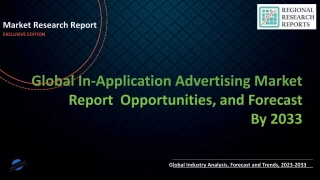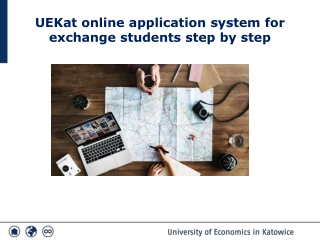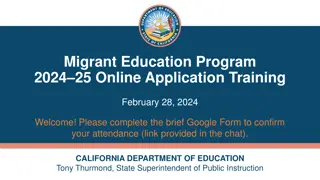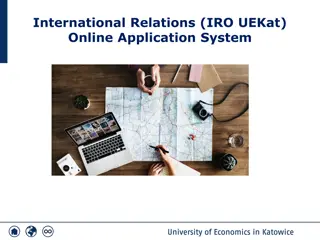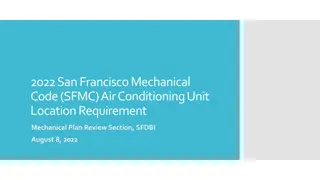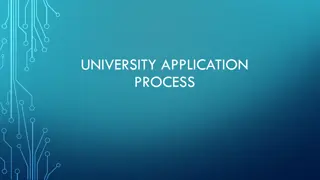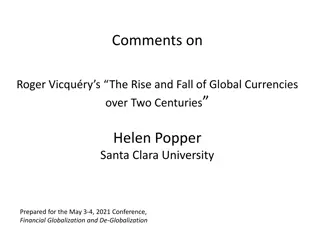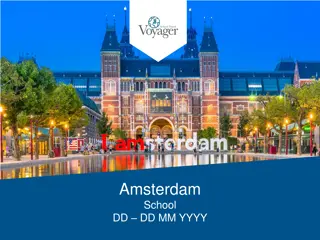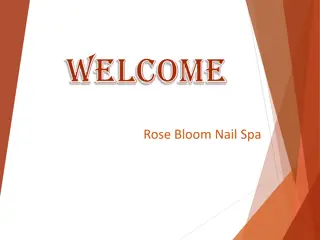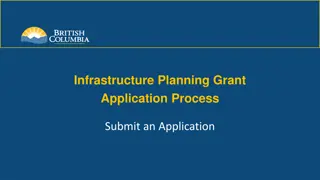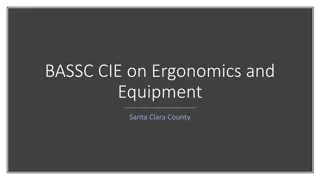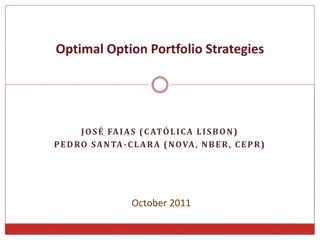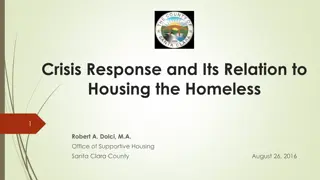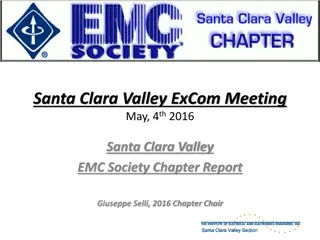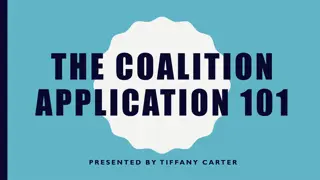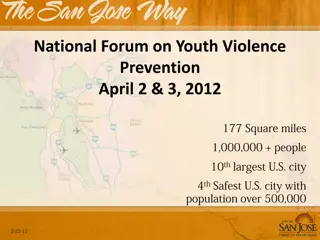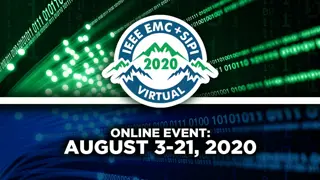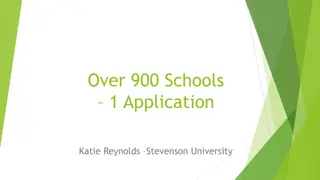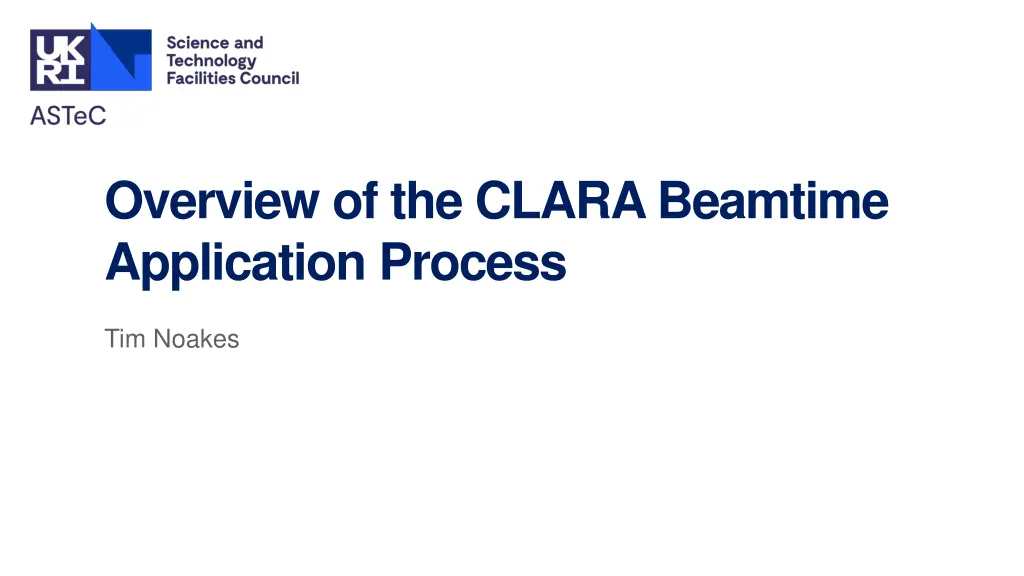
CLARA Beamtime Application Process Overview
Learn about the CLARA Beamtime application process, including eligibility criteria, modes of access, application procedures, peer review, outcomes, scheduling, user support, and more. Changes in the process are highlighted to reflect modernization, with a focus on user engagement and scientific evaluation.
Download Presentation

Please find below an Image/Link to download the presentation.
The content on the website is provided AS IS for your information and personal use only. It may not be sold, licensed, or shared on other websites without obtaining consent from the author. If you encounter any issues during the download, it is possible that the publisher has removed the file from their server.
You are allowed to download the files provided on this website for personal or commercial use, subject to the condition that they are used lawfully. All files are the property of their respective owners.
The content on the website is provided AS IS for your information and personal use only. It may not be sold, licensed, or shared on other websites without obtaining consent from the author.
E N D
Presentation Transcript
Overview of the CLARA Beamtime Application Process Tim Noakes
Outline Overview Eligibility Criteria Modes of Access Application Form (online) Technical Assessment Peer Review of Proposals Beamtime Allocation Panel Evaluation Criteria Outcomes and Feedback Scheduling User and Facility expectations User Support Scientist User Office Risk Assessments User Data Reporting, Evaluation and Feedback Summary Changes from previous procedures highlighted in red! 2
Overview Basic procedure similar to 2018 but with some changes/modernisation Documentation has been modified to reflect this Existing documentation will be transitioned to a web-based version As before Users discuss experiment with facility staff Users submit application form Technically assessment Scientific evaluation by Beamtime Allocation Panel (BAP) Ranking list formed and proposals awarded time starting from the top until it is all allocated Letters sent out to all applicants 3
Eligibility UK academics UK universities and Research Council institutes (including STFC staff) and those with Research Council senior or advanced research fellowships (or their equivalent) and Royal Society and Royal Academy of Engineering fellowships. Joint proposals with UK and international industrial/commercial users possible, but results must be made available in the open literature. International Users applications from non-UK academics (without prior contractual access arrangement) may be accepted at the discretion of the CLARA Leader. International Agreements Recognised overseas research organisations will be eligible for access through contractual access agreements, for example transnational access agreements (current Euro-Labs scheme). Commercial and Contractual Users through an agreed contract with STFC. Commercial access will be run in time not allocated to facility access 4
Modes of Access Six months of access to be provided per year for the following access categories in priority order Trans-national Access Programmatic Access Direct Access Trans-national access will have a limited number of days available as defined by the scheme Trans-national access proposals will be assessed by the scheme panel as well as the CLARA beamtime access panel 5
Programmatic Access Applicable where there is a need for a connected series of experiments or individual experiments requiring significant access (several weeks) and this is to be included on a grant or other funding request Where programmatic access is to be included in an external grant a letter of support from the CLARA Leader is required. Programmatic access should be discussed with the CLARA Leader and facility staff before asking for the letter of support A written description of work and anticipated beam time requirements needed 1 to 2 pages A technical evaluation of the request will be made The Beamtime Allocation Panel (BAP) will assess the scientific and technical merit of the Programmatic Access proposal and provide a recommendation. The final decision to accept a programmatic access proposal is with the CLARA Leader Costs of providing CLARA beam time are to be included in any research council grant proposal (number to be determined) Note that programmatic access users will still need to fill in an application form for each allocation period to provide technical details To allow facility staff to plan effectively for the experiment Whilst these proposals will not be reassessed for scientific merit they will be assessed for technical feasibility and potential health and safety issues Applicants still need to discuss the proposals with facility staff before submission 6
Direct Access Calls for applications requesting DirectAccess to the accelerators will be issued periodically Requests for beamtime under the direct access scheme will normally be for shorter periods Longer requests are expected to apply under the Programmatic Access process Direct access requests for longer periods may be considered, for example where the proposed work will be in support of a later Programmatic Access bid, or where the complexity and scientific impact of the proposed experiments justify a longer experimental run All proposals are subjected to peer review by the BAP Successful proposals are scheduled in accordance with accelerator availability as determined by the CLARA Leader Direct Access will be free of operating costs to eligible users. All other costs (for example, travel and/or provision of additional equipment) are the responsibility of the user 7
Application Form New web-based version of the form being developed Information required includes Details of the Principal Investigator and Co-investigators Experiment title and science and technology area it addresses Duration of beamtime and set-up time required Experimental requirements Accelerator operating conditions Sample and environment conditions Additional equipment required Safety information Experiment description Goals Impacts Potential applications Light touch for Programmatic Access! 8
Technical Assessment Before scientific evaluation a technical assessment will be carried out Carried out by a panel of ASTeC experts across many technical areas (beam dynamics, lasers, diagnostics, vacuum, etc) Feasibility of experiment Additional capabilities that might be required Technical support and other resource that might be required and how this would be funded Potential health and safety issues Number of days requested/needed for experiment and set-up Where issues are identified further discussions between facility staff and the Principal Investigator may be held and some modifications to the application may be permissible at this stage A report will be provided to the Beamtime Allocation Panel Technical difficulty could be a factor influencing the panel awarding beam time 9
Peer Review of Proposals Reviewed by the Beamtime Access Panel Andy Wolski (CI) Chair Phil Burrows (JAI) Jim Clarke (ASTeC) Rajeev Pattathil (CLF, alternative acceleration expert) Tim Noakes (Technical Coordinator) advisory capacity only Each panel member ranks the proposals independently Scores averaged and an initial ranking list formed Pairwise comparison of proposals running down the list where two proposals are close in score should the order be changed? Diversity and Inclusion check before final ranking list agreed 10
Evaluation Criteria Before the meeting each panel member rates each proposal out of 6 in these three criteria New criteria going forward Scientific Excellence Scientific and technical merit International competitiveness Strategic value and timeliness Leadership and Planning Level of leadership in the area Track record of the investigators Planning of the proposed experiment Impact Scientific or technical impact Training and the development of next generation researchers Industrial relevance 1 - This proposal is fundamentally flawed 2 - This proposal does not meet all of the evaluation criteria 3 - This proposal meets all evaluation criteria but with clear weaknesses 4 - This is a good proposal that meets all evaluation criteria but with minor weaknesses 5 - This is a strong proposal that broadly meets all evaluation criteria 6 - This is a very strong proposal that fully meets all evaluation criteria Individual members average their scores using a weighting which they personally specify to produce a single mark for each proposal Scientific Excellence must have the highest weighting! Members individual scores are collated and averaged to form the initial ranking list A cut off will be determined by the panel below which a proposal cannot be awarded beamtime (likely to be around 4) 11
Outcomes and Feedback Proposals will be awarded time going down the ranking list until the allocation period is full In the event that the next proposal in the list needs more time than available then a less highly ranked proposal (but still above the cut off) may be scheduled if this can be completed in the available time Letters (emailed) will be sent to all applicant letting them know the outcome of their proposal Where unsuccessful some feedback will be included in the letter 12
Scheduling Successful applicants will be asked for availability before scheduling Attempt will be made to comply with users wishes Scheduling flexibility may be limited by various factors such as the order experiments need to run in, the availability of equipment, new capability coming online, etc One 8 hour shift/day Some flexibility to run on into the evening at the discretion of the user support scientist/beam delivery team Interruptions for re-optimisation and longer periods for changing parameters/set up should be expected 13
Facility and User Expectations Preparedness - Users should be well prepared both before putting in an application and specifically before the beamtime commences Allocations - Where users cannot use their allocated beamtime they should notify the User Office at the earliest possible opportunity. This could increase the likelihood of contingency time being available Experimental Team Leader Each application will have an Experimental Team Leader (which could be the PI) who will be the main point of contact, be available during the whole run and should have an excellent understanding of the experiment Team Members - Normally at least 2 per shift Be sufficiently knowledgeable to contribute to the experiment Have received suitable Health and Safety training at their host institutions Will also be required to carry out Induction Training and more specific Tool-Box Training to use particular sub-systems or equipment (for example search training for the FEBE hutch) Health and Safety Users must abide by STFC Health and Safety rules and should be aware of Local Rules and StandingOrders that may apply A suitable RiskAssessment and in many cases MethodStatement must be provided at least two weeks before the run (more later) Equipment Loan Where users need to borrow specific equipment from the laboratory, they should enquire well in advance (potentially before applying). Enquiries should be made on each run where such equipment is required 14
Facility and User Expectations Allocations Minimum 1 month s will be given and ideally longer for more complex experiments Notification of any delay or cancellation will be sent as soon as practicably possible. An alternative time slot within contingency will be sort and discussed this with the users at the earliest possible opportunity Users should expect to receive the number of shifts allocated or as near as is reasonably practicable. Beam Parameters and Performance Probable performance outlined in previous talks Users should consult with accelerator staff (in the first instance the Principal User Support Scientist) to confirm that the parameters they need can be provided The successful shift delivery gauged by ability to provide the agreed parameters for a substantial part of that shift Experimental Areas - Description of FEBE given in previous talks User Office- A User Office (UO) will be established to assist users with administrative tasks (more later) User Support Scientist - Each user group will be provided with a User Support Scientist to act as the principal interface with the accelerator staff (more on next slide). Other Support - Daresbury has access to extensive specialist expertise (i.e. mechanical, electrical, controls, riggers etc.) and every effort will be made to make these services available to Users Limited resource, and prior planning is essential Extended use may require costs to be met from the users host institution 15
User Support Scientist User Support Scientists replace Local Contacts used in previous runs Scientific support only (administrative support via UO) Dedicated staff plus some of the previous local contacts (accelerator physicists, laser scientists, etc) Provide advice, expertise and support prior to and during the experimental beamtime User groups should also feel free to discuss aspects of their experiment with any other member of the accelerator team as appropriate during their run User Support Scientists can be contacted before writing a beamtime application for advice Should help establish/more clearly define user requirements before the run Ensure everything is ready at start of run Available for consultation during the whole experiment (or provide a suitable deputy) 16
User Office A new user office will be established to handle various administrative tasks and will be the contact point for all non-scientific enquiries. Examples include Providing details of required training for site access and experimental area access and how this can be completed Information on accommodation in the local area and travel to and from it Expenses claims where these are covered (likely to be trans-national access only in the first instance) Responsible for correspondence, for example informing users of any potential delays 17
Risk Assessments Users must submit an agreed Risk Assessment and in many cases Method Statement (RAMS) at least two weeks in advance of their run The preparation of the RAMS is likely to be an iterative procedure between users and facility staff to ensure the final document is suitable The assigned User Support Scientist will provide assistance with the preparation of the RAMS The facility operations team will also be more involved in RAMS preparation Recognition that a more collaborative approach to RAMS preparation is required! 18
User Data Implementing standardized data structures for storing metadata as part of any machine data stored part of CLARA software tools In talks with Ada Lovelace Centre (part of STFC Scientific Computing Department) regarding existing tools to handle data storage and user access to data repositories Transition towards similar solutions to CLF and ISIS, such as the Instrument Catalogue and centralized storage with access via User Office credentials Plans for a more formal data policy to be established, including commitments to long term storage of data Ambition is to make data access easier for users pre- intra- and post- experiment and leverage existing STFC digital solutions 19
Reporting, Evaluation and Feedback Immediately after a run users should submit a 1-2 page report summarising of the work carried out and likely outputs (papers, etc) Submission of this report will be a required precursor to any further beamtime allocation A user feedback questionnaire will be circulated for completion after each run following the format used for the previous two allocation periods The results from the feedback questionnaires will be reported in subsequent user meetings and an action plan formed to address issues arising Separate questionnaire will be issued to staff and a wash-up meeting held to capture any additional learning points 20
Previous Feedback 2018 Run Lack of well-defined beam set-ups Ensured more standard set-ups were developed before the following run commenced and also improved beam reproducibility and reliability Unknown longitudinal beam properties Bunch compression diagnostic (CTR) installed for optimisation, EO measurements after the run to measure actual bunch lengths Scheduling (need for gaps between runs) Schedule for VCAP03 spread 3 months of facility time over 6 months and included more contingency Changes implemented for the 2022 run! 21
Previous Feedback from 2022 Run Planning and support Dedicated User Support Scientists (and Operators) hired. Should provide more effort to plan effectively and work more closely with users Risk assessments Need for more assistance for users has been identified, facility staff to play a larger role Data acquisition and diagnostics (requirement to save multiple image streams simultaneously and shot numbering) Multiple images at 5 Hz, shot numbering being implemented (not yet tested on the machine). FEBE line and hutch will have more diagnostics plus capacity to upgrade 22
Summary Beamtime application procedure similar to previous runs but with some subtle changes More details provided on the mechanism for programmatic access More online processes being developed To develop a technically feasible proposal talk to facility staff before hand User support being split between new User Office (administrative) and dedicated Support Scientists Improved support for users and specifically the preparation of RAMS New policies and procedures for data handling easier for users to access Brief reports on each experiment now required Please complete feedback forms as we do act on the findings! 23

